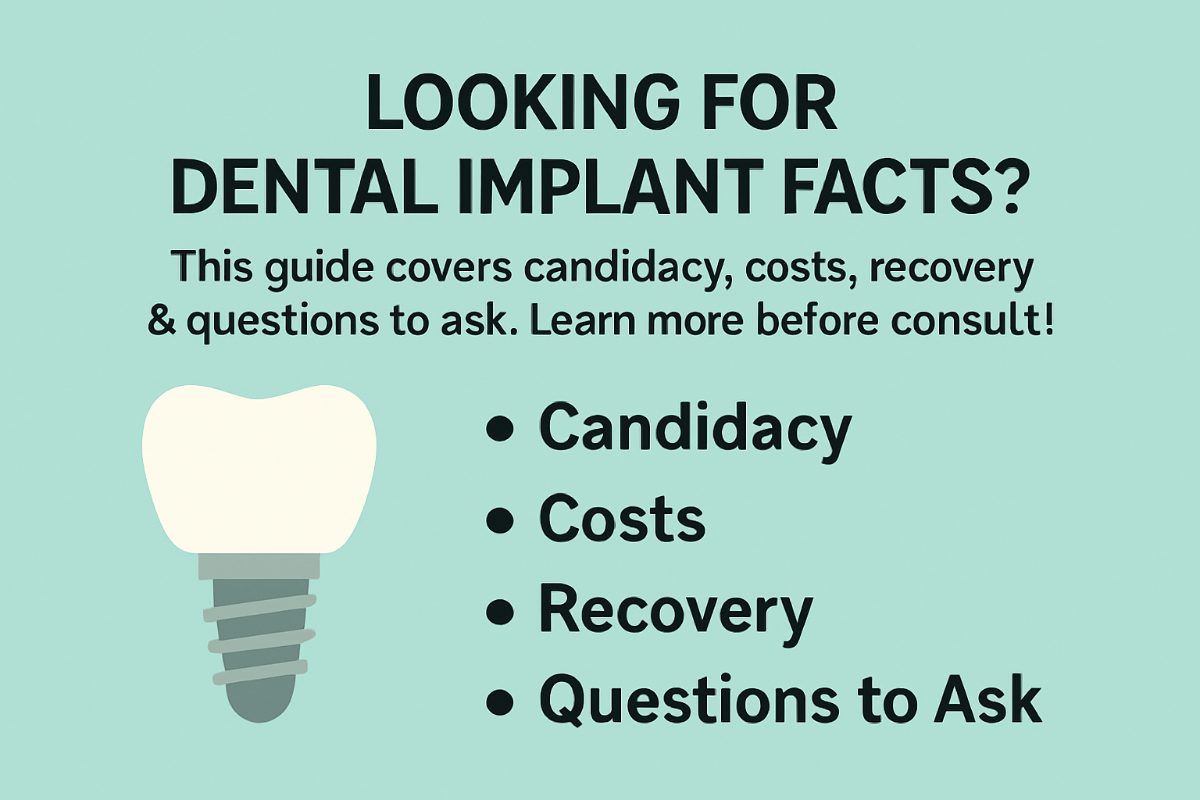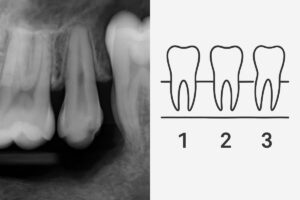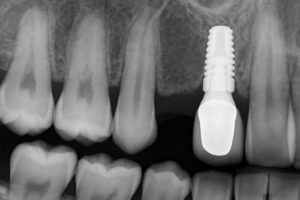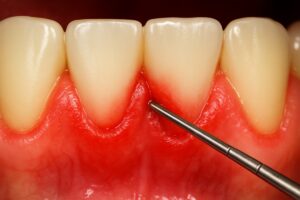Many people search for clear dental implant facts before deciding on treatment. This short guide covers the basics—what implants are, who makes a good candidate, costs and timelines, risks and recovery, and the key questions to ask your doctor. These dental implant facts by Berkeley, CA are meant to give you plain answers so you can feel confident preparing for a consultation.
Key dental implant facts by Berkeley, CA
What a dental implant is
A dental implant is a titanium post placed into the jaw to act like a tooth root. It has three basic parts: the implant (the metal root), the abutment (the connector), and the crown (the visible tooth). Implants support chewing, preserve bone, and are designed to function like natural teeth.
Common types of implant restorations
Single-tooth implants replace one missing tooth with one implant and crown. An implant-supported bridge uses two or more implants to replace several teeth. A full-arch solution, often called All-on-4, uses a few implants to support a full set of upper or lower teeth. Each option fits different needs and budgets.
Success rates and expected lifespan
Dental implants have high success rates—often over 95% when placed and maintained properly. “Success” means the implant remains stable, infection-free, and functional for years. With good home care and regular dental checkups, many implants last decades.
Who is a good candidate for dental implants
Good candidates have healthy gums, adequate jawbone, and controlled systemic health conditions. Smoking, uncontrolled diabetes, or heavy alcohol use can lower success rates. Older age alone is not a barrier; bone quality and overall health matter more. If you’re not a candidate, alternatives include traditional bridges or removable dentures until implants become possible.
What affects cost, timeline, and outcomes — dental implant facts by Berkeley, CA
Bone grafts and sinus lifts
If you’ve lost a tooth long ago, the jawbone may shrink. Bone grafts or sinus lifts rebuild bone to support an implant. These add time (months to heal) and cost but improve long-term outcomes.
Number of teeth replaced and restoration type
Replacing a single tooth costs less and takes less time than a full-arch restoration. Some patients can have teeth placed same-day, while others need staged treatment with healing periods between steps.
The role of technology
3D imaging, guided implant surgery, and laser tools improve placement accuracy and reduce recovery time. These technologies can lower complication risk and increase predictability.
Risks, recovery, and long‑term care
Typical recovery is a few days to a couple of weeks for soft tissue healing; full bone integration can take several months. Expect swelling, mild pain, and temporary changes in chewing. Watch for severe pain, fever, or loosening—these can signal complications. Long-term care means daily brushing and flossing, quitting smoking, and regular professional cleanings.
Questions to ask your implant doctor — dental implant facts by Berkeley, CA
Ask about the doctor’s implant experience, success rates, and complication stats. Request a clear cost breakdown, expected timeline, sedation options, and what technology will be used (3D planning, guided surgery, lasers). Ask about follow-up care and what happens if an implant fails.
Why choose a board-certified periodontist for implants
Board-certified periodontists train extensively in bone and gum surgery, which helps with complex cases like grafting or gum recession. Dr. Keith Chertok, DDS, is a board-certified periodontist in Berkeley, CA who offers advanced implant placement, laser-assisted techniques, and minimally invasive options that focus on predictable outcomes and comfort.
Next steps and how to get a consult
Prepare for your initial consult by bringing medical and dental histories, a list of medications, and questions from this guide. A specialist can review your records, take any needed 3D images, and outline personalized dental implant facts and options. Call to schedule a consultation to discuss whether implants are right for you.






